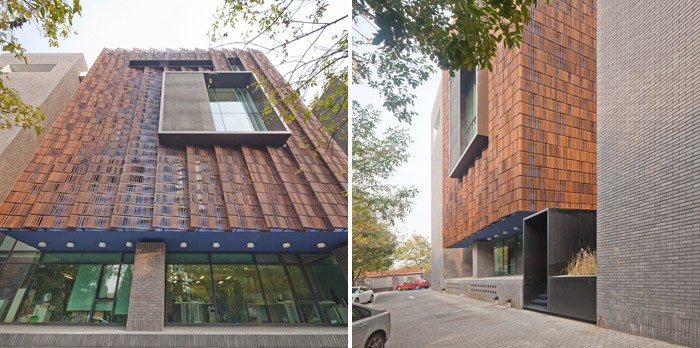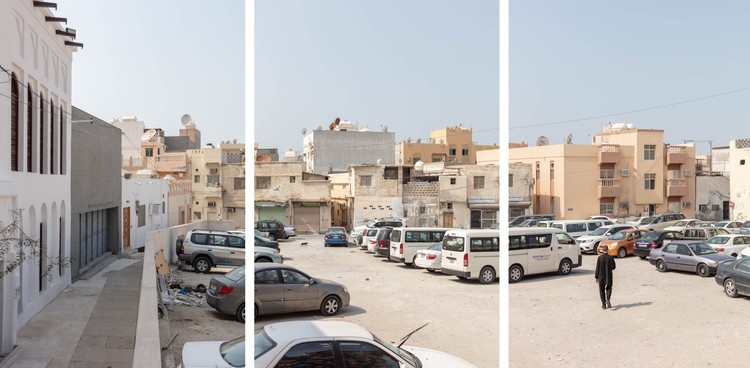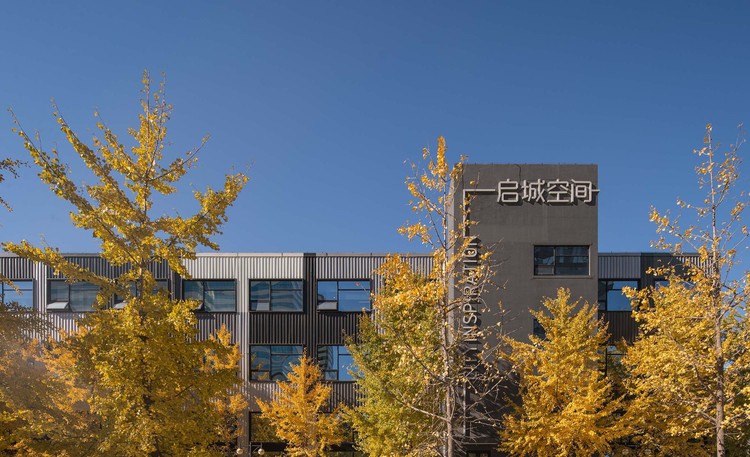House In Mishuku Ⅱ Nobuo Araki
2013-08-02 01:00
© Shimizu Ken
(清水健)


架构师提供的文本描述。这座两层楼高的房子坐落在东京Setagaya的人口稠密地区.这是为同样的客户建造的第二栋公寓,一对60多岁的已婚夫妇。原型在2004年设计了他们的第一个住宅。随着家庭成员的增加,他们不得不扩大财产。幸运的是,房子旁边的空间变得空荡荡的,第二座住宅就建在那里。虽然该地点靠近一条主要街道,但相对平静和安静。原型为如何解决东京这样一个典型的建房区的房屋建设问题制定了议程,以及如何在第一和第二宫之间以及围绕着它们的社会和景观之间建立新的、有营养的关系。
Text description provided by the architects. This two-story house stands in a densely populated area of Setagaya, Tokyo. This is the second building of a paired residential unit for the same clients, a married couple in their 60s. The Archetype designed their first residence in 2004. As the family members increased, they had to expand the property. Fortunately, the space right next to the house became vacant and the second residence was built there. Although the site is close to a main street, it is relatively calm and quiet. The Archetype set the agenda regarding how to solve the issues of house building in such a typically built-up area of Tokyo, and how to create new and nourishing relationships between the first and second houses, as well as the society and the landscape surrounding them.
© Shimizu Ken
(清水健)


在人口稠密地区建造房屋时,出现了一个问题,即是否有窗户面对外面,因为它可以给人一种开放的感觉,但却牺牲了一定程度的隐私。我们决定它的外部不加大窗户。乍一看,这座平面的立方体建筑似乎有点脱离周围环境,但一旦进入室内,它就显得格外开放和通风,因为天花板的一部分向天空敞开。
When building a house in a densely populated area, a question arises regarding whether or not to have windows facing the outside since it can give a sense of openness but it sacrifices certain degrees of privacy. We decided not to have large windows on its exterior. At first sight the flat, cubic building seems a little detached from the surroundings, yet once inside, it is remarkably open and airy since a part of the ceiling opens up to the sky.
© Shimizu Ken
(清水健)


这座两层楼的每一层都没有隔墙。在一楼,与传统的日式住宅不同,入口处的楼层是凹进和高架的,入口一直延伸到没有高度差异的居住空间,目的是为了让这对夫妇将来可以进入。二楼是居住/就餐区,面积大到足以让三代人聚在一起享用晚餐。有平顶天花板的宽敞房间配备了一个最小的厨房系统,配有向下通风装置,在不使用时可以自行收缩。这所房子的设施很少,因为它只为这对夫妇准备,而且更充分运作的设施可以在小巷对面的主要住宅找到-这两座房子相互支持。
Each floor of the two-story building has no partitions. On the first floor, unlike the traditional Japanese house in which the floor is recessed and elevated at the entrance, the entryway continues to the living space without height difference, aimed for the future accessibility for the couple. On the second floor is the living/dining area, which is large enough for the three generations of the family to gather and enjoy their dinner. The spacious room with flat ceiling is equipped with a minimal kitchen system with downdraft ventilator that retracts itself when it’s not in use.. The facility of the house is kept minimal since it is intended for the couple only, and the more fully functioning facility can be found at the main residence just across the alley- the two houses supports each other.
© Shimizu Ken
(清水健)


入口区的门廊是第二个住宅的特点:建筑物的基板在入口处升起并突出,形成一条长凳。空间由部分天花板和墙壁保护,但由于天花板上有一个开口,总是有光线和空气进入。它既不是里面也不是外面,它既是家庭的聚集地,也是他人的聚集地。门廊是立方体房屋中的空隙,它向内外开放。它连接了主体住宅和第二住宅,也连接了两院和社会。在不破坏房子周围的和谐环境的情况下,长凳的存在可能会打破家庭与外部社会之间的关系,而在这个社区往往是与世隔绝的社区。坐在长凳上,这对夫妇白天可以放松,抽根烟,下午晚些时候,他们的孙子们可以从学校回来,在回到主要住所之前聚集在那里。它的功能几乎像公园长凳,但空间更亲密,几乎像第二个客厅是半开放的公众。
A porch at the entrance area is what characterizes this second residence: the building’s baseboard rises and protrudes at the entrance area to create a bench. The space is protected by the partial ceiling and walls, yet since there is an opening on the ceiling there is always light and air coming in. It is neither inside nor outside; it works as a gathering area for the family as well as for others. The porch is the void in the cubic house that opens itself towards both inside and outside. It connects main residence and the second one as well as the two houses and society. Without breaking the harmony of the environment surrounding the house, the presence of the bench could be an icebreaker to the relationship between the family and the outside society in the built-up neighborhood, where the community tends to be insular. Sitting on the bench, the couple can relax and smoke a cigarette during the day, and later in the afternoon their grandchildren can come back from school and gather there before going back to the main residence. It functions almost like a park bench, but the space is more intimate than that, almost like a second living room that is semi-open to the public.
© Shimizu Ken
(清水健)


虽然乍一看,这座建筑似乎与外界隔绝,但这一亲密的门廊空间是开放和欢迎的,创造了家庭、房屋和社会之间的亲密关系。
Although at first sight, the building seems to be shut off from the outer world, the intimate porch space is open and welcoming, creating intimate relationship between the families, houses and the society.
Floor Plan








































Architects Nobuo Araki
Location Tokyo, Japan
Category Houses
Area 7142.0 sqm
Project Year 2013
Photographs Shimizu Ken
























